#votive offerings
Text
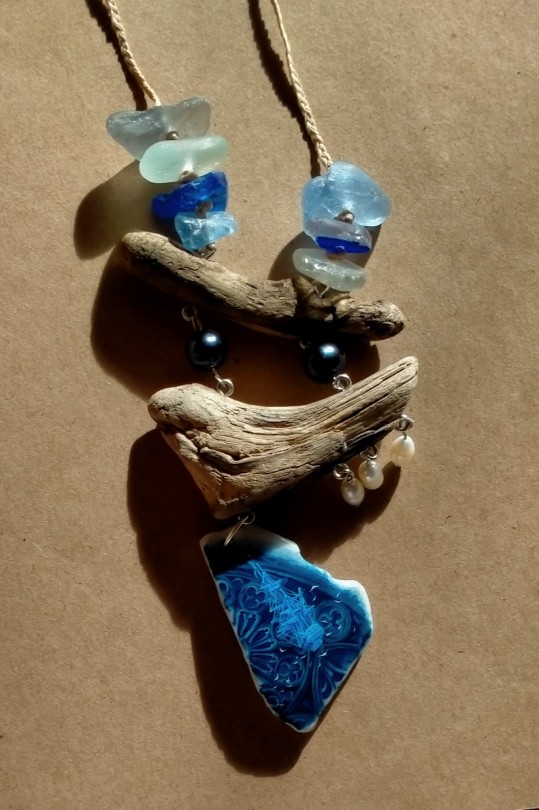

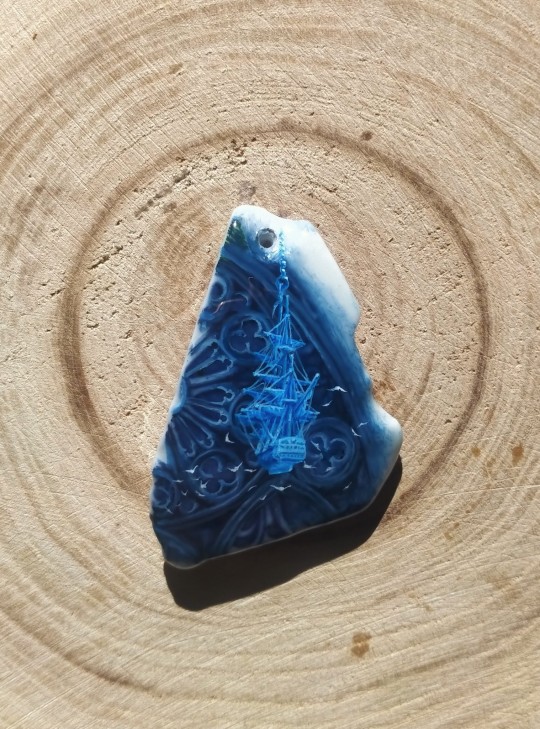
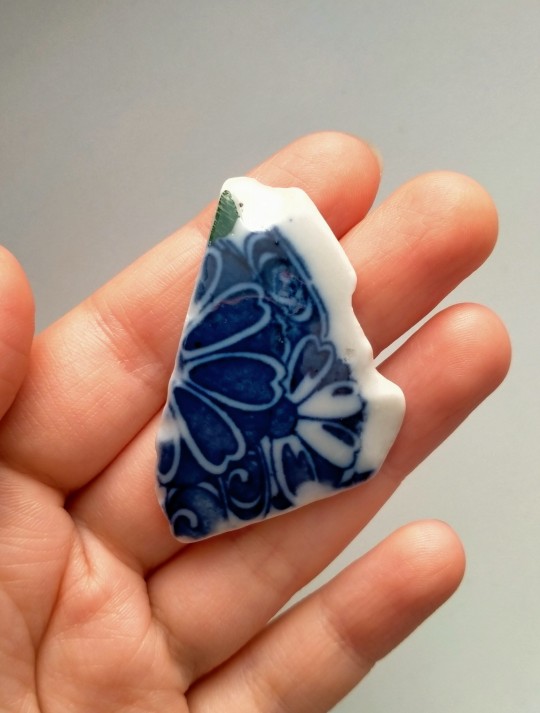
This porcelain chip's pattern immediately reminded me of Gothic windows, and in turn it made me think of votive ships. Painted sea pottery, sea glass, driftwood and pearls
#miniature#sailing ship#votive ship#tall ship#nautical art#naval#painted miniatures#driftwood#sea pottery#sea glass#pearls#necklace#gothic cathedral#gothic window#gothic#seagulls#votive offerings#beach findings#beach combing#my art
131 notes
·
View notes
Text
I wasn’t and am still not a crystal person, but lately I’ve been enjoying offering stones I associate with a deity as votive offerings. I have tiny crystal phalluses in amethyst and leopard jasper for Dionysus, and they’re just the cutest.
#hellenic polytheism#hellenic pagan#hellenic devotion#helpol#hellenic reconstructionism#hellenic paganism#hellenic polytheist#hellenic community#hellenic gods#prayer#votive offerings#crystals
56 notes
·
View notes
Photo
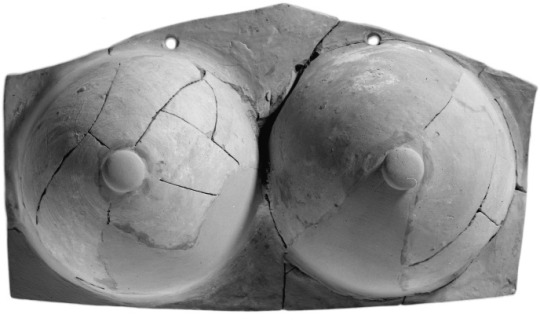

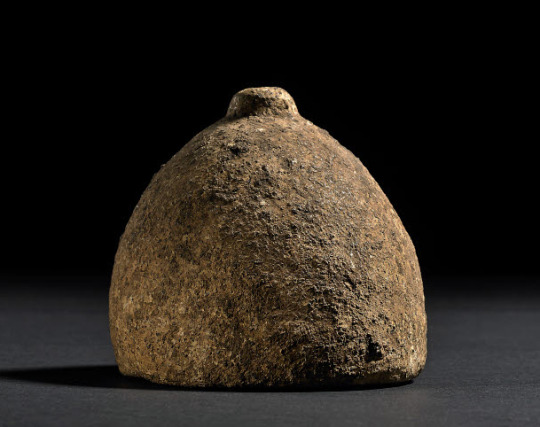

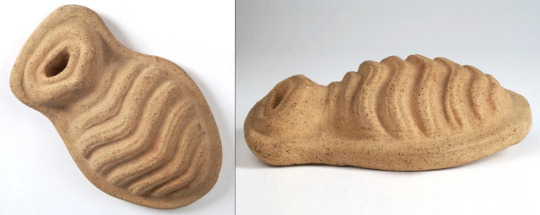






Votive offerings made from terracotta, marble, and sometimes bronze were left at healing sanctuaries and other religious sites as offerings to gods such as Asclepius (Latin Aesculapius), the Greco-Roman god of medicine. They were intended either to indicate the part of the body that needed help or as thanks for a cure. Although the practice originated in earlier cultures, the votive offerings became very popular in Roman times – particularly between the 400s and 100s BCE. A large range of different votive body parts were made and offered up in their thousands. Anatomical votive offerings are particularly striking, as we can discern their specific functions and the hopes held by those who offered them. Many of them were clay-baked within a mold, allowing for easy and inexpensive mass production. As a result, they were widely used objects that were used by ordinary people.
With the official institution of Christianity in the Roman Empire came the need to transfer ancient pagan traditions to a Christian context. Votive offerings therefore began to be used in Christian settings instead of pagan sanctuaries. By the Medieval period, anatomical votive offerings continued to be widespread. Christian shrines across Europe saw both locals and pilgrims depositing ex-votos in the shapes of body parts. Wax votive offerings in the shape of body parts are still regularly produced to be left in Christian shrines. Renaissance votive offerings also often took the form of painted panels depicting scenes of accidents or illnesses with saintly intercession.
The fact that the tradition has continued in popular devotion up to the Modern period shows the power that painted votive offerings undeniably have for the faithful.
Votive offerings are incredibly diverse and wide-ranging, spanning through the history of art.
breasts - terracotta - Corinth
breasts of Astarte - marble - Canaanite
breast - terracotta
uterus (two views) - terracotta
uterus, breast, ear, eye - terracotta
vulva - terracotta - Etrusco-Roman - 200 BCE-200 CE
arm, foot, uterus, ears, eye - terracotta
hair - marble, probably Roman, 200 BCE-400 CE
hair/scalps - terracotta & painted terracotta - Roman - 200 BCE-200 CE
group of marble votives - Greek
#art by others#other's artwork#ancient#antiquity#votive offerings#body parts#white marble#terracotta
211 notes
·
View notes
Text

I realized: I need Your love.
Come to me, just in a dream,
Come on and rescue me.
9 notes
·
View notes
Text
“The things which man leaves behind at a turning point in his life remain preserved in the shrine. This dedication cannot be annulled; the renunciation is irrevocable.”
⤷ Walter Burkert, on the votive offering in Ancient Greek ritual (in translation by John Raffan), in Griechische Religion der archaischen und klassischen Epoche (Greek Religion of the Archaic and Classical Periods)
8 notes
·
View notes
Text
"Hera’s military concerns at Perachora are referred to by horse figurines, horse trappings, statuettes of mounted warriors, and weapons. In addition, there is a figurine of a woman on a horse. Since she might have held a child, the statuette possibly refers to Hera’s concern with offspring, which provides the foundation for the armed forces and secures their stability. The location of the Heraion at the border of the Corinthian territory suggests that Hera was also regarded as responsible for the protection of its sovereignty, which is a further aspect of her military concerns.
Mounted warriors also occur at the Argive and Tirynthian Heraia. Further evidence for Hera’s military concerns at Tiryns is provided by terracotta shields. These do not occur at the Argive Heraion where a statuette of a riding woman was found, which might have had a similar function as the one from Perachora. However, the fact that Pausanias refers to a shield that hung in the pronaos of the classical temple shows that weapons were dedicated to Hera so that their absence from the archaeological record does not prove their nonexistence at the Heraion. Here, Hera’s military concerns probably derive from her function as protectress of both offspring and the territory of Argos. Since the Tirynthian Heraion is located on the upper citadel, Hera at Tiryns, on the other hand, was worshipped as protectress of the city and its inhabitants.
The Hera sanctuaries at Poseidonia - Paestum are similar to each other as both of them received statuettes of seated women with horses, images of armed women, and weapons. As a peculiarity, there are horse trappings and a skeleton of a horse at Foce del Sele. Although both sanctuaries received similar votive offerings, they probably relate to different aspects of Hera’s military concerns. The location of the Heraion at the southern bank of the river Sele, which marks the northern border of the colony’s territory, suggests that they relate to her function as protectress of Poseidonia’s sovereignty. In this regard, it is comparable to the Heraia at Perachora, Argos, and the one on Samos. The placement of the urban Heraion in the immediate vicinity of the city’s political centre, on the other hand, suggests that its votives relate to Hera’s function as city-protectress. Since both Hera sanctuaries provide evidence for pregnancy and childbirth, the reason for the dedication of such votives probably also derives from Hera’s function as protectress of offspring, considering that it provides the basis of the military force.
At the Samian Heraion, the variety and number of dedications which refer to Hera’s military concerns show that it must have been an important cult aspect. Horse figurines, horse trappings, and weapons occur frequently. Furthermore, there are ship models and dedications for naval victories which, except for Perachora, have not been found in any of the other Hera sanctuaries. They indicate that Hera was worshipped as protectress of the Samian fleet, which is a local peculiarity that demonstrates that the Heraia are embedded in the social and political situation of the city-states they belong to. Like at the other Heraia, Hera’s military concerns probably also derive from her function as protectress of pregnancy and childbirth since there is a statuette of a riding woman with a child in her arms."
- The Significance of Votive Offerings in Selected Hera Sanctuaries in the Peloponnese, Ionia and Western Greece by Jens David Baumbach
#hera#heraion#heraia#votives#votive offerings#perachora#Tiryns#argos#argolid#paestum#samos#argive heraion#samian heraion#quotes#excerpts
4 notes
·
View notes
Text
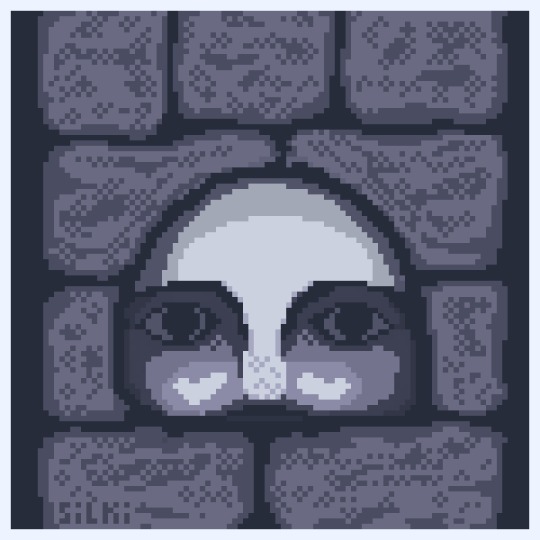
For an old pixel daily theme, ‘ritual’. Since I already did a lead figuring from a binding spell for the ‘creepy’ theme, I figured I’d go for a slightly more wholesome (and still creepy) ritual object here.
It’s an anatomical votive offering based on this one currently in the Acropolis Museum (y’know, that place where the Parthenon Marbles should be).
I ended up having to make it look like the column was made of bricks rather than the limestone block that it is because that’s the only way I could get even remotely close to making it look like the face is inside the column rather than resting on its surface.
Info from the Acropolis Museum website:
It was found together with the pillar in 1876 on the south slope of the Acropolis, in the area where the Sanctuary of Asklepios is located.
At the time that archaeologists discovered the pillar there was still an inscription preserved, reading "Praxias dedicated it to Asklepios with prayers for his wife". Clearly, Praxias' wife was suffering from an ailment of the eyes and he offered their image to the god.
There’s something very human about this kind of votive offering and what they reveal - that ancient people worried about their health, and the health of their loved ones in the same way people do today. That sense of worry, of wanting to be able to help is an experience in common. It’s relatable content.
Praxias loved his wife, and his wife was ill. So he dedicated this in hopes that it would help his wife.
Other relatable content: there’s at least one votive offering of hair. Just… hair as if it were arranged on a head. No head. Just the hair. People have apparently always worried about losing their hair. (Absolutely not telling anyone here how they should feel about changes to their own body, but your hair is not your worth, or your beauty, and anyone who mocks you over any part of your appearance can go shit pine cones. Unless you are literally Samson, then it might be an issue).
Anatomical votive offerings are often found in shrines, temples, places associated with healing. Some are figurines of the whole body, but often the votive is a representation of the specific organ/body part that required healing (or perhaps, occasionally, protection - there’s at least one instance of a votive offering of a foot made by someone who was about to start a long journey. Some/lotsof the votives of wombs (yes, there are lots) were probably to keep a pregnancy healthy, others might be in thanks for a healthy pregnancy. Others might be related to fertility issues as well needing healing from all the many ways that pregnancy and childbirth fuck your body up (and which we don’t talk about enough in contemporary society because what happens to the incubator just isn’t important, right? /s)
There are plenty of offerings showing eyes, ears, feet, hands, wombs, breasts and external female genitalia (which is fascinating in that it’s represented here. It’s not exactly something you see represented/talked about in antiquity (or today)). And, of course, there are lots of dicks. Probably related to erectile dysfunction than fertility, given that ancient understandings of fertility mostly thought of it as a problem with the womb rather than the spunk.
I’m kinda fascinated by this one of ‘female viscera’ Currently in the Science Museum in London. You just don’t see that many representations in antiquity of the insides of a body. And it kind of reminds me of the anatomical Venuses (highly recommend Joanna Ebenstein’s Book ‘The Anatomical Venus: Wax, God, Death and the Ecstatic’.
Anyway, check this website to to read more about anatomic votives and to see things such as a ‘Votive left hand, broken at wrist, possibly making a prophylactic gesture’.
Oh. Canvas size is 100x100 pixels.
#my phone was absolutely determined to autocorrect Praxias to Praxisschocke#which… what? Praxisschock i guess you’d translate as ‘reality shock’#but with an e at the end it’s a weird form of the plural#so… reality shocks#idk phone are you feeling okay?#tagamemnon#votive offerings#anatomical votives#sometimes i make things: pixel art edition#if you clicked all the links you get a prize#(the prize is the excellent content from clicking them)#tumblr mobile if you eat this post for being too long istg I will… idk. cry
4 notes
·
View notes
Text
A People of Their Word
9 “If the vow is an animal that may be offered as an offering to the Lord, all of it that he gives to the Lord is holy. 10 He shall not exchange it or make a substitute for it, good for bad, or bad for good; and if he does in fact substitute one animal for another, then both it and the substitute shall be holy. 11 And if it is any unclean animal that may not be offered as an offering to the Lord,…
View On WordPress
#clean#commitment#dedicated to God#God#holy to the Lord#honesty#integrity#Israel#Leviticus#Leviticus 27#Moses#offerings#promises#sacrifices#Sinai#unclean#votive offerings#vows
0 notes
Photo




Greek Temple Complex Reveals Thousands of Votive Figurines
Archaeologists excavating a hilltop sanctuary on the Aegean Sea island of Kythnos have discovered “countless” pottery offerings left by ancient worshippers over the centuries, Greece’s Culture Ministry said Wednesday.
A ministry statement said the finds from work this year included more than 2,000 intact or almost complete clay figurines, mostly of women and children but also some of male actors, as well as of tortoises, lions, pigs and birds.
Several ceremonial pottery vessels that were unearthed are linked with the worship of Demeter, the ancient Greek goddess of agriculture, and her daughter Persephone, to whom the excavated sanctuary complex was dedicated.
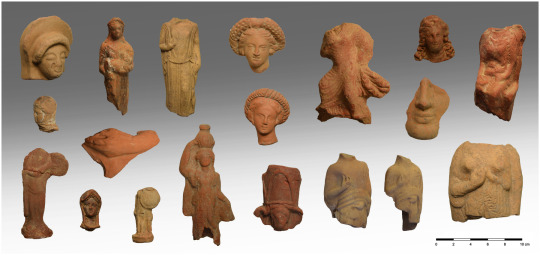
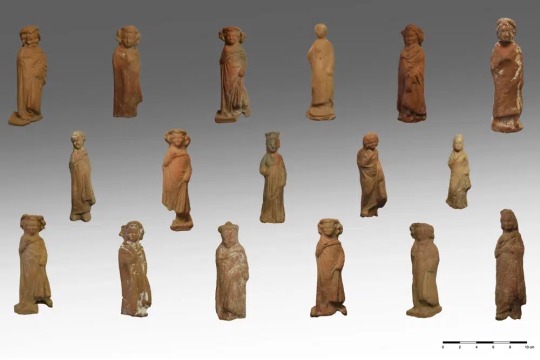
The seaside site of Vryokastro on Kythnos was the ancient capital of the island, inhabited without break between the 12th century B.C. and the 7th A.D., when it was abandoned for a stronger position during a period of pirate raids.
The artifacts came from the scant ruins of the two small temples, a long building close by that may have served as a temple storeroom and a nearby pit where older offerings were buried to make space for new ones. The sanctuary was in use for about a thousand years, starting from the 7th century B.C.



The excavation by Greece’s University of Thessaly and the Culture Ministry also found luxury pottery imported from other parts of Greece, ornate lamps and fragments of ritual vases used in the worship of Demeter and Persephone at Eleusis, an ancient Athens suburb.
It is unclear to what extent the site on Kythnos was associated with Eleusis — one of the most important religious centers in ancient Greece, where the goddesses were worshipped during secret rites that were only open to initiates forbidden to speak of what they saw. The sanctuary at Eleusis is known to have owned land on the island.
Kythnos, in the Cyclades island group, was first inhabited about 10,000 years ago. Its copper deposits were mined from the 3rd millennium B.C., and in Roman times it was a place of political exile.
The excavations are set to continue through 2025.
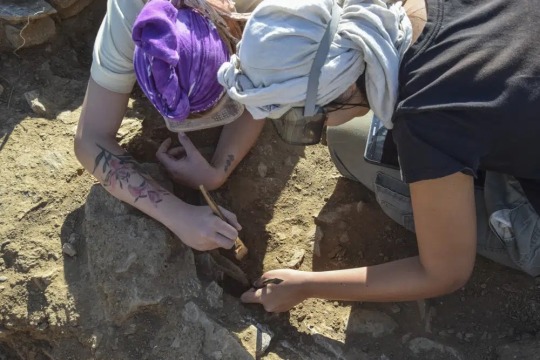



#Greek Temple Complex Reveals Thousands of Votive Figurines#island of kythnos#pottery#pottery offerings#ancient artifacts#archeology#archeolgst#history#history news#ancient history#ancient culture#ancient civilizations#ancient greece#greek history#greek art#long reads
530 notes
·
View notes
Text


This one photo of marble votive eyes stared at me for too long. So here's my offering to the father of physicians. A prayer for their eyes to open, for their sight to heal. I don't know what else to do, how to make people see and care. So many deaths, pain and atrocities around, and no one cares. They choose to ignore. Some even genuinely believe there's nothing wrong. Almost two years of this goddamn war. Help us, Asklepios, son of long-shooting Apollo, you're our only hope.
An Offering (working title - 'the author is Russian and is about to lose it completely')
#painted stones#ancient greek#greek mythology#asklepios#miniature#rock painting#painted rocks#minerals#agate#votive#votive offerings#sacrifice#heart#fire#Aesculapius#eyes#my art
90 notes
·
View notes
Text



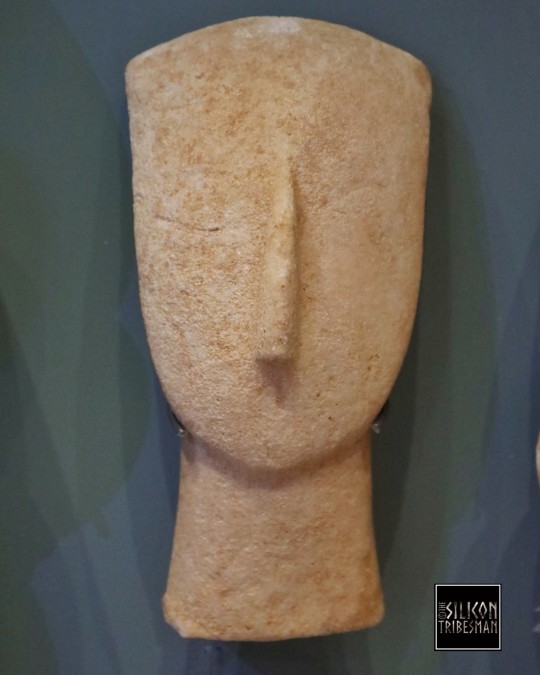


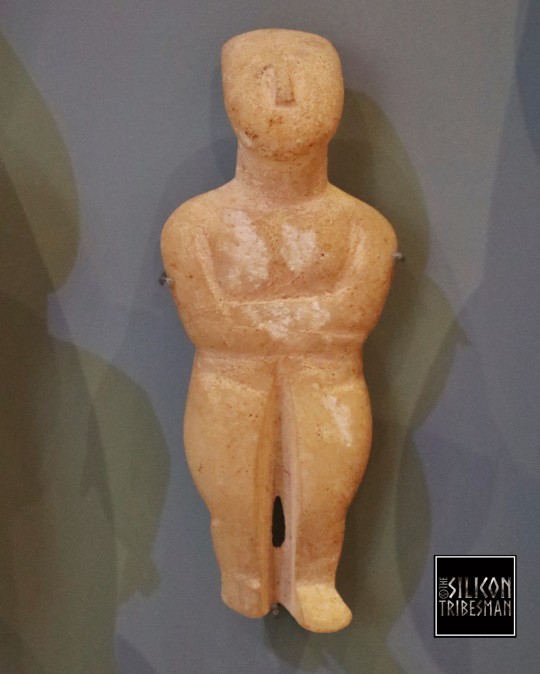

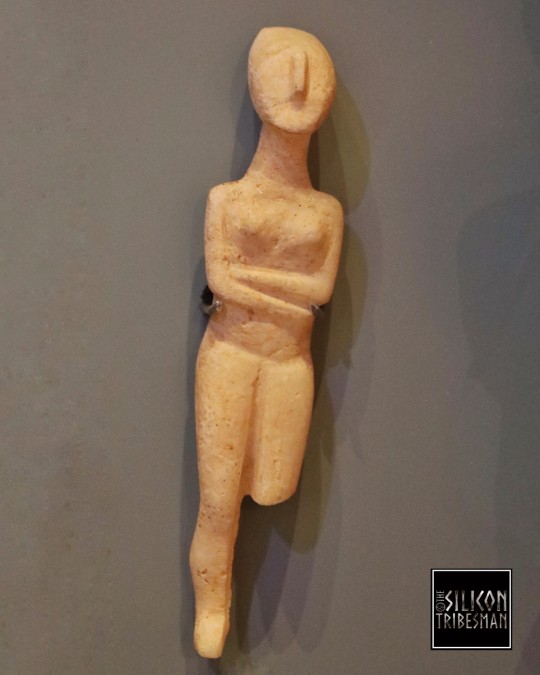
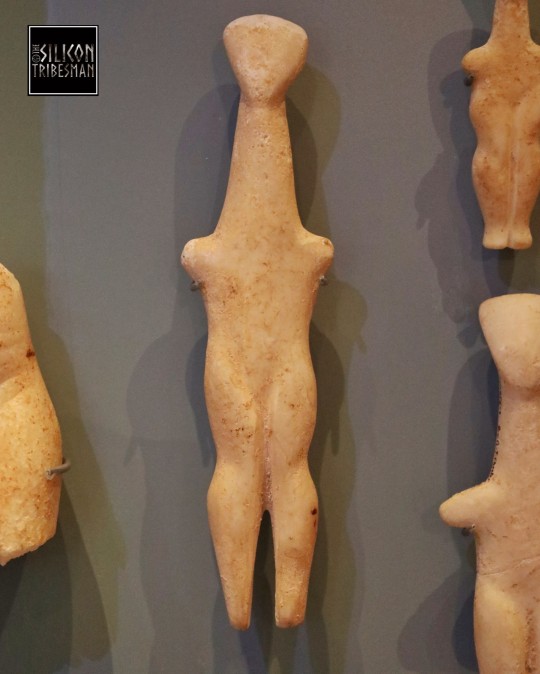
Cycladic Figurines of Ancient Greece, 4th and 3rd Millennium BCE
Most of the marble figures were sculpted in the Cyclades during the late 4th and 3rd Millennium BCE. The sculptors used simple tools, like obsidian for cutting and emery for polishing.
Found in settlements and tombs, these figures may have served as representations of the dead, of gods and goddesses and their followers or as offerings and amulets.
When the figures were first discovered, some still bearing traces of painted decoration, they were generally considered crude and ugly. Later in the 20th century their simple form influenced artists like Picasso, Modigliani and Moore.
Ashmolean Museum, Oxford
#cyclades#cycladicfigures#archaeology#ancient craft#ancient cultures#ancient living#ancient sites#greece#votive#offering#marble#statuette#figure
110 notes
·
View notes
Text
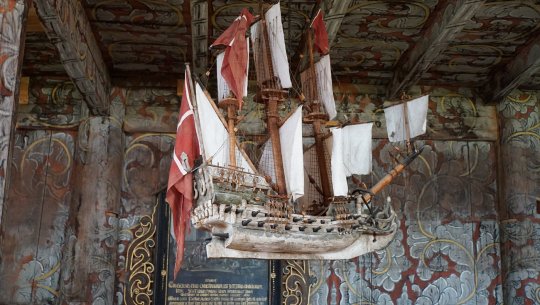
A votive ship of the 32-gun frigate Nordstjernen in Kvernes stave church, Norway. The church dates from 1633 and the ship, which was built and donated by a 17 year old ship's boy, dates from the early 18th century.
150 notes
·
View notes
Text

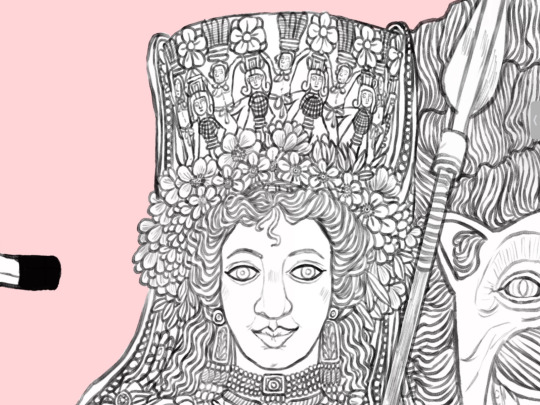



Votive offerings for the goddess 🏛🌹
A stress-relief drawing that I made for the goddess Aphrodite due to the process of heavy house-moving and deep-cleaning for the Lunar New Year last week. Now available in both of my INPRNT and Redbubble shop!
#ancient greek#greek mythology#aphrodite#venus#hellenic polytheism#all of her votive offerings based on blending cultures of Ancient Near East Egypt Cyprus & Ancient Greece
162 notes
·
View notes
Text
Title: 逢魔紅月、奉還ノ絶[Radio Edit] (Scarlet Moon in the Twilight Hour of Calamity, The Severance of Devotion to the Ruler [Radio Edit])
Arrangement: 黒鳥
Vocals: 槙野明
Album: Votive Offering
Circle: EastNewSound
Original: Flowering Night
#touhou#touhou project#touhou music#flowering night#sakuya izayoi#phantasmagoria of flower view#votive offering#槙野明#黒鳥#eastnewsound
16 notes
·
View notes
Text
"(In the Heraion at Perachora) There are fifteen standing and thirteen seated terracotta figurines of women, who hold doves to their breasts. In contrast to the seated statuettes, the standing ones are also provided with flowers. The figurines are of local manufacture and date stylistically from 530 to 480 BC. In addition, an elaborate bronze dove was found. The attachment holes at its sides suggest that it belonged to a statue. The dove was fabricated by a local workshop and dates to the 7thcentury BC.
As a fertility symbol, the dove is a characteristic attribute of the oriental mother goddess Astarte. It is generally believed that the Greeks assimilated her with Aphrodite, in whose cult doves played an important role. In her famous sanctuary at Paphos on Cyprus, for instance, they were kept as her sacred animals. The same applies to her sanctuary on Mt. Eryx in Sicily, which shows that Aphrodite’s relation to the dove is not a local peculiarity but a general characteristic of her cult. This is confirmed by ancient literary sources, which offer plentiful evidence for Aphrodite’s association with this bird. Because of this, Higgins regards all statuettes of women with doves as images of Aphrodite. This identification is adopted by Alroth, who suggests that Aphrodite appears as a visiting goddess at the Heraion.
However, the large number of statuettes with doves found at the Heraion casts doubt on this proposal. Out of a total number of eighteen seated figurines dating to the last quarter of the 6th century BC, thirteen carry doves. Since the seated figurines can probably be identified as images of Hera, there would be far more Aphrodite than Hera statuettes at that time. As the dove is also a popular attribute among the standing figurines, the number of Aphrodite images would be even higher. Although visiting gods are a common feature among Greek cults, such a great number of Aphrodite statuettes at the Heraion would be quite exceptional. However, the statuettes do not necessarily have to be identified as images of Aphrodite. Although the dove is one of her characteristic attributes, it also occurs in connection with other deities such as Adonis, Eros, and Dione. The fact that in character they are all related with Aphrodite explains their relation to the dove. However, this particular bird also appears in connection with deities that are not commonly associated with Aphrodite. A good example is provided by the cult statue of Demeter at Phigalia which, as noted by Pausanias, held a dove and a dolphin in its hands. The presence of the dove in cults of other deities shows that characteristics of Astarte were not confined to Aphrodite but also shared by other Greek deities.
Ancient literary evidence shows that Hera and Aphrodite were closely connected at various places in the Greek world. Hera Aphrodite is said to have been worshipped as protectress of brides at Sparta, a dedication for Hera and Aphrodite is preserved at Acrae on Sicily, and Aphrodite was worshipped together with Hermes at the Samian Heraion. Both goddesses obviously shared certain characteristics, which explains why Plutarch and Plotinus regard them as equal. Thus, the dove is likely to have been a suitable attribute for Hera so that the seated figurines from the Heraion that carry doves can be identified as representations of her."
- The Significance of Votive Offerings in Selected Hera Sanctuaries in the Peloponnese, Ionia and Western Greece by Jens David Baumbach
6 notes
·
View notes
Text
A plethora of perfect and distinct finds from the San Casciano dei Bagni Etruscan-Roman thermal bath complex in Tuscany, Italy, are causing much excitement. They include all sorts of rare votive offerings, including ears, wombs and even a penis, not to mention thousands of coins, and religious stone carvings. What a find!
39 notes
·
View notes